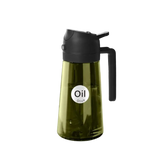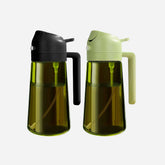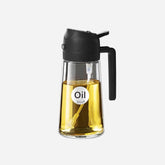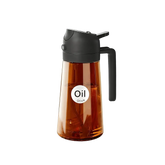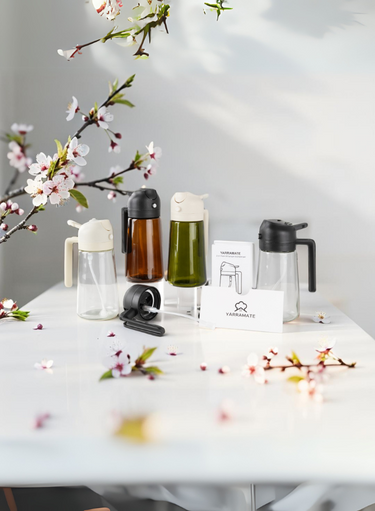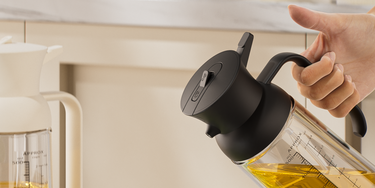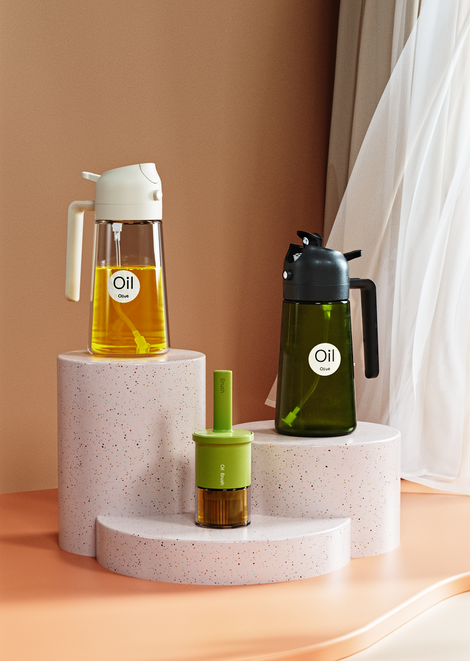The Ultimate Guide to Perfect Milk Foam: From Novice to Pro
Ever gaze wistfully at the glossy, velvety milk art atop your local café's latte and think, "I wish I could do that at home"? That silky-smooth texture, that perfect marriage of coffee and milk, seems like a magic trick performed only by seasoned baristas. But what if I told you that you're closer than you think to mastering that magic? Forget intimidating espresso machines; we're going to unlock the secrets to beautiful milk foam, and yes, you can even achieve it with a simple handheld milk frother.
It's not just about bubbles; it's about creating an experience. It's that first, comforting sip that's part coffee, part sweet, airy milk. It's the feeling of accomplishment when you pour a heart—wobbly at first, but a heart nonetheless—for yourself or someone you love. Let's embark on this journey together, from your very first froth to textures so fine they'd make a pro nod in approval.
Getting Started: Frothing Milk Doesn't Have to Be Hard
Before we dive into technique, let's talk about your two key ingredients: the milk and the tool. Getting these right is half the battle won.
Why Your Milk Choice Matters (A Lot!)
You might think any milk will do, but the science of frothing tells a different story. The magic lies in the proteins and fats. When you introduce air, the proteins create a structure around the air bubbles, and the fat content contributes to that creamy, rich mouthfeel.
The Unsung Hero: The Handheld Milk Frother
You don't need a fancy espresso machine to start. A good quality handheld milk frother is an incredible tool that can produce surprisingly beautiful results. It's all about how you use it. The key is to control the amount of air you're incorporating and then focus on creating a vortex to break down the larger bubbles into a homogenous, silky texture. This simple coffee and milk frother combo is your ticket to café-style drinks at home.
From Level 1 to Level 99: Mastering Milk Texture
Creating beautiful milk foam is a journey of understanding texture. Think of it like leveling up in a game. You start with big, airy bubbles and gradually refine your technique to create a flawless, liquid velvet.
To give this a professional framework, we can look to the standards set by the pros. The Specialty Coffee Association (SCA) has a 5-level guide for evaluating milk foam quality. While this is for baristas using steam wands, the principles of texture are universal. You can view their detailed standards here. Let's adapt this idea for our home-frothing journey.
Level 1-20: The Bubbly Beginnings
This is where everyone starts. You've introduced a lot of air, and the result is a stiff, bubbly foam that sits on top of hot milk. It's great for a classic, old-school cappuccino, but it's not ideal for pouring art.
- How to get there: Submerge the tip of your frother just below the surface and froth for a good 15-20 seconds until the volume has doubled.
Level 21-60: The Silky "Wet Paint" Stage
Now we’re talking! At this level, you’ve started to break down those big bubbles. The texture is looser, shinier, and has the consistency of wet paint. This is the sweet spot for creating a simple heart or a lovely rosetta in your latte. You've learned to not just add air, but to mix it in.
- How to get there: Start with the frother near the surface for only 5-7 seconds to introduce air. Then, plunge the frother deeper into the milk and tilt your jug to create a whirlpool. This vortex is crucial; it smashes the big bubbles into smaller ones, creating a homogenous texture.
Level 61-99: The Professional Microfoam
This is the pinnacle. The milk is glossy, perfectly integrated, and has no visible bubbles. It’s liquid velvet. This is the texture needed for intricate latte art. Achieving this with a handheld frother is challenging but not impossible. It requires patience and a feel for the milk.
- How to get there: This is all about refinement. Introduce even less air at the start (just a few seconds). Spend the majority of your time with the frother submerged, focusing on that perfect, silent vortex. After frothing, give the jug a few firm taps on the counter to eliminate any remaining large bubbles and a final swirl to keep it glossy before pouring.
Your Step-by-Step Guide to Frothing Perfection
Ready to put it all into practice? Let’s go.
- Chill Out: Pour cold milk into a cold frothing pitcher. Fill it to just below the base of the spout (about 1/3 to 1/2 full).
- The Aeration Phase (Adding Air): Insert your handheld milk frother so the tip is just below the surface. Turn it on. You’re looking for a gentle "psst" sound. Do this for 3-8 seconds, depending on your desired texture level. You'll see the volume of the milk grow.
- The Integration Phase (Creating the Vortex): Plunge the frother deeper into the milk, angled slightly. Tilt the pitcher. Your goal is to get the milk spinning in a whirlpool. This is the most important step for that silky texture. Continue this until the milk reaches the ideal temperature.
- Grooming: Turn off the frother before removing it from the milk. Give the pitcher a firm tap on the counter to pop any surface bubbles. Swirl the milk gently. It should look glossy and smooth.
- The Pour: Pour immediately into your espresso. For latte art, start pouring from a height to let the milk dive under the crema, then bring the pitcher tip close to the surface to let the white foam float on top.
Beyond the Basics: Pro Tips & Tricks
- Practice with a drop of soap: Don’t want to waste milk? You can practice the vortex technique with cold water and a tiny drop of dish soap.
- Listen to your milk: The sound of frothing is a great indicator. A loud, aggressive bubbling means you’re creating too-large foam. A gentle hiss is the sound of microfoam being born.
- Freshness is key: Always use the freshest milk you have. Milk that's been open for a while doesn't froth as well.
The journey to perfect milk foam is a delicious one, filled with experimentation and plenty of coffee. Don't be discouraged if your first few attempts are more "abstract art" than a perfect rosetta. Every cup is a learning experience. Embrace the process, enjoy the cozy, café-quality drinks you're creating in your own kitchen, and soon you'll be pouring with the confidence of a pro. Happy frothing!






